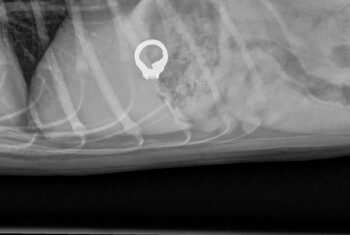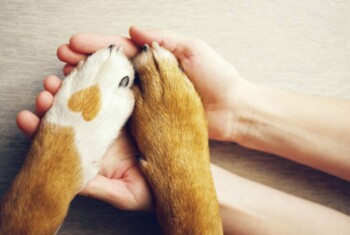Halloween can be a dangerous and scary time for pets
Each Halloween, dogs and cats, as well as other household pets, are exposed to heaps of sweet treats, changes in household décor, and altered routines that can be stressful. In fact, the four most common food-related Halloween hazards for pets are chocolate, overconsumption of candy, raisins and candy wrappers.
Veterinarians at BluePearl Specialty and Emergency Pet Hospital have treated dozens of pets who have ingested toxic treats or inedible objects during the week of Halloween. So, to help keep your furry friends safe this season, Kevin Kelley, DVM, Senior Emergency Clinician at BluePearl in Clearwater, Fla., is offering a few useful tips.
The most common Halloween emergency we see is dogs who have consumed chocolate and other sweets. Dark or baking chocolate and candy containing the sugar substitute xylitol can be especially dangerous,” explained Dr. Kelley. “Dogs react quickly to xylitol. In less than 30 minutes, blood sugar levels can drop and they’ll begin to show symptoms of hypoglycemia. They may become lethargic, weak or confused, and seizure.”
If your pet ingests candy or sweets containing any of these toxic ingredients, Dr. Kelley recommends contacting a poison control hotline immediately. Two good options, which do have a small cost associated with them, are the Pet Poison Helpline at 1 (844) 492-9842 or the ASPCA Animal Poison Control at 1 (888) 426-4435.
Veterinarians on these hotlines can let you know what risk the pet is at for injury, what treatment is needed, if any, and may save you a trip in, if treatment is unnecessary,” said Dr. Kelley. “Calling into one of these hotlines could even save your pet’s life by encouraging you to seek immediate veterinary care for detoxification and treatment.”
Keep your pets safe with these five tips:
- Hide the candy and sweets. Sweets, especially chocolates, can cause pancreatitis and even intestinal blockages if ingested with the wrapper. Chocolate is one of the most toxic candies to dogs, so be sure to never leave trick-or-treat bags on floors or on easy to reach surfaces like low chairs or coffee tables. Even if out of sight, a pet’s sense of smell can motivate them to find the treats in purses, tabletops, and accessible areas, and ingest them when they normally would not otherwise.
- Keep pets away from the door. Depending on the neighborhood, the front door could open dozens of times for trick-or-treaters. This gives pets many opportunities to slip out and possibly get lost or hit by a car. On Halloween day, check on your pet regularly and consider keeping them in a separate room away from the front door until trick-or-treating has ended. The change in routine can also agitate anxious pets. Insulating them away from the party or front door, or using tools for anxiety management both over the counter and prescription as warranted may make it a less stressful holiday for everyone in the family.
- Microchip. Even if you take precautions, there’s still a possibility that your pet can get outside. Microchipping your pet will help ensure that your dog or cat is found and returned home. Talk to your veterinarian about microchipping, and if your pet is already microchipped, make sure the information is up-to-date.
- Be careful with costumes. Pet costumes can impair movement, vision, or air intake, so stick with something that is loose-fitting and simple. Costume embellishments, such as metallic beads and snaps, can be ingested and lead to intestinal blockages and/or poisoning—specifically, metals containing zinc or lead. Dyes and other hair coloring products can be harmful to pets even if labeled non-toxic to humans, so it is best to avoid use of these products altogether. In addition, the pet may not recognize family members in costumes and react to them as strangers, putting the dog under increased stress.
- Throw away glow sticks and jewelry. If punctured and ingested, glow sticks/jewelry contents can cause irritation, drooling, and foaming at the mouth. Pets love to chew on these, so be sure to safely discard them after use.
Chocolate can cause excitation, vomiting, and diarrhea at moderate doses, and seizures, cardiac arrhythmias and death at higher doses,” explained Dr. Kelley. “The type of chocolate will determine how much of the toxic components are present and level of risk to the pet.”
Don’t Wait to Seek Help
It is important to remember that while Halloween is an exciting time for people and pets alike, pets are relying on owners to keep them safe from the dangers that this holiday brings. Dr. Kelley urges pet owners not to wait to seek help if there is chance that a pet has consumed something toxic.
Don’t wait to seek help. With most toxins, the longer you wait to start treatment, the greater the risk to the pet,” explained Dr. Kelley. “So, time is very important to successful management, and waiting until symptoms occur often means a worse prognosis or longer and more expensive course of treatment.”


